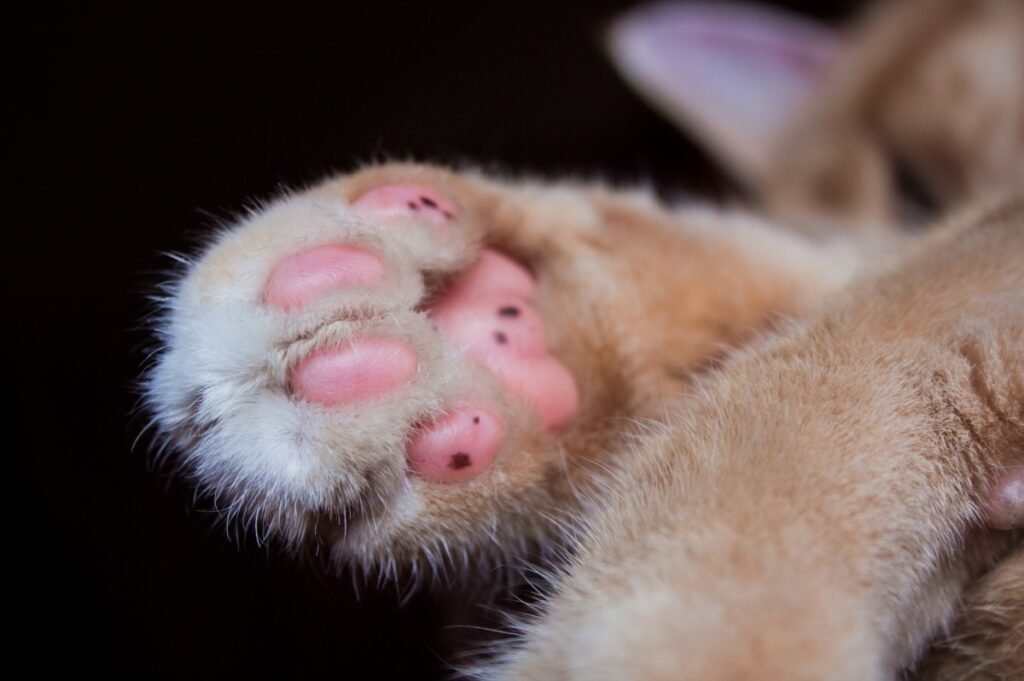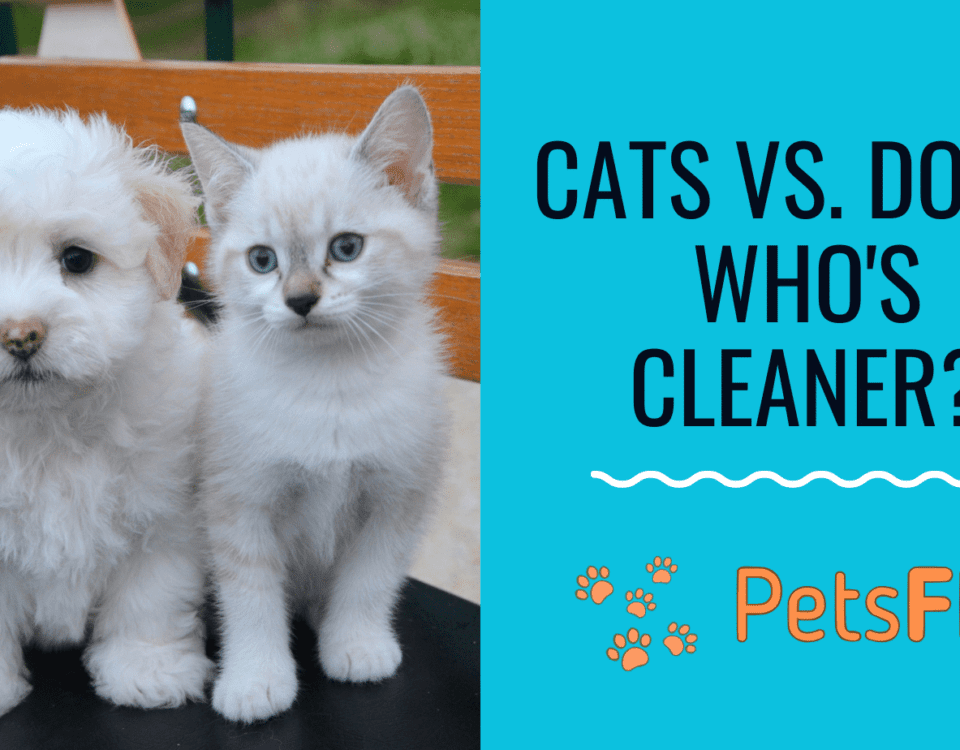


18 Cat Breeds With Very Long Legs – Comprehensive Guide
December 30, 2023


Why does cat litter keeps getting stuck to my cat’s bum? [Solutions]
December 30, 2023After your cat’s surgery, the vet might suggest a cone, E-collar, or Elizabethan collar. This cone-shaped device helps prevent your cat from scratching, licking, or chewing at the stitches, ensuring a safe and swift recovery. It is essential to post-surgical care to keep the suture area undisturbed until fully healed.
But how long does a cat need to wear this cone?
Your cat’s duration of wearing a cone post-surgery varies based on the wound’s nature, the staples’ dissolving rate, and the aftercare level. Typically, cats may no longer need a cone within 5-10 days, though the average healing time is around 14 days.
Let us learn more about cats and cones in the article below:
How Long Does The Cat Needs To Wear Its Cone Post-Neutering?
Post-neutering, a cat typically requires a cone for about 10 days to prevent licking and chewing at the incision site, which can itch as it heals.
Notably, the ideal age for neutering a male cat is 4-5 months. Younger cats often recover faster from this minor surgery, needing the cone for only 5-7 days. This duration can vary depending on the surgery’s severity, infections, the cat’s age, and breed.
However, recovery can be slower and more challenging for older male cats, especially those over 10 with additional health issues. In these cases, a vet might advise keeping the cone on for 2-3 weeks to ensure proper healing.
Understanding Your Cat’s Behavior with a Cone
When a cat wears a cone, it’s common to see behavioral changes due to discomfort and restricted movement. They may initially try to remove the cone or move awkwardly, and their usual grooming habits will be disrupted. Some cats show signs of stress, like hiding or decreased appetite.
As a cat owner, it’s important to help them adjust by providing extra affection, modifying their environment for easier access to food, water, and litter, and closely monitoring for any signs of distress or unusual behavior. Understanding and patience are key during this adjustment period, as each cat will adapt at their own pace.
Recommended Cone Wearing Time for Cats After Spaying
After a spaying procedure, which sterilizes female cats, veterinarians generally advise keeping the E-collar (cone) on for at least 10-12 days. Even though the sutures may heal and stop itching after 10 days, it’s crucial to maintain the cone for the entire duration.
Spaying is a major surgical procedure, so it typically requires a longer cone usage time than neutering – usually up to 2 weeks or more, depending on your vet’s post-operative assessment.
In some instances, if the surgical site becomes swollen or infected, which can happen if post-operative care is not meticulously followed, the period for wearing the cone may extend even further.
Therefore, a cat owner must ensure a hygienic and dry environment to promote faster healing.
Recommended Cone Wearing Time for Cats After Declaw
Declawing, a surgical procedure where a cat’s claws are removed from the toe joints, is often performed for safety or to protect furniture and carpets. After traditional declawing, a cat should wear a cone for about 2 weeks.


Cat Paws Closeup
However, if the declawing is done using a laser method, the recovery is faster, requiring the cone for only 1 week. If a cat is overly active, excessively licks or bites at the toes, or is distressed by the cone, it risks reopening bandages and causing harm or infection to the surgical area.
Recommended Cone Wearing Time for Cats After An Abscess
An abscess, often resulting from cat fights, injuries, or parasites, is a pus-filled wound. If your cat has a strong immune system, it may heal naturally.
However, if the immune response is insufficient, your cat might need to wear a cone for around 2 weeks after an abscess injury, provided it’s treated with proper hygiene.
The duration of cone usage may increase if the wound doesn’t heal as expected or if it’s complicated by bacterial infections or conditions like feline leukemia (FeLV) or feline immunodeficiency virus (FIV). In these cases, your cat may need to wear the cone for longer than 2 weeks.
Additionally, if your cat continues to lick the infected area, its saliva, which can be infectious and contaminated, may further delay healing and extend the need for the cone.
Recommended Cone Wearing Time for Cats After Stitches
The standard guideline is to keep a cone on your cat until the stitches dissolve and the wound fully heals, typically within 10-14 days. However, factors like the cat’s age, surgery type, habits of licking and chewing, and exposure to moist, unclean, or parasitic environments might necessitate wearing the cone for longer than 2 weeks.


Cat Stitches Closeup
Some cats may feel depressed wearing the cone and try to remove it, while others, being clever and active, might attempt to paw it off, risking reopening their stitches.
It’s crucial to understand that removing the cone prematurely is only advisable if specifically recommended by your vet and under careful monitoring.
Recommended Cone Wearing Time for Cats After Eye Surgery
Knowing the duration of wearing a protective cone is crucial after specific eye surgeries in cats, such as cherry eye, entropion, and ectropion surgeries. Veterinarians typically recommend using an E-collar (cone) for at least 14 days following these sensitive operations.
In cases where a cat’s eye must be removed due to conditions like eyelid tumors or glaucoma, an enucleation surgery is performed. Modern medicine allows cats to recover within 5 days after eye removal surgeries.
However, the cat must wear a cone for around 2 weeks despite this quick initial recovery. The cat may feel the urge to rub its eyes against surfaces like carpets or floors or use its paws, which can hinder healing.
Recommended Cone Wearing Time for Cats After Eye Cystostomy
Cystostomy, a surgical intervention on the urinary bladder in cats, is undertaken for various reasons, like removing bladder stones, tumors, or clots, alleviating urethral obstruction, and repairing bladder traumas or ruptures.
Following such significant surgeries, veterinarians firmly instruct pet owners to keep their cats in an Elizabethan collar (cone) until full recovery, typically for about 2 weeks, especially if there’s moderate bruising.
It’s essential to monitor your cat’s behavior during recovery closely. If they persistently interfere with the surgical site during early healing, this can lead to dehiscence, potentially extending the recovery period to 3 weeks or more.
Does My Cat Need To Wear Its Cone After Spayed/Neutered?
Yes, your cat should wear a cone after neutering. The cone, an Elizabethan collar or E-collar, helps prevent your cat from licking, biting, or scratching the surgical site.


Cat Cone Closeup
This is crucial for proper healing and avoiding infection or incision reopening. Typically, the cone is recommended for about 10 days, the average time it takes for the site to heal adequately.
Can I Remove The Cone Just After 7 Days?
Yes, you can remove your cat’s cone after 7 days, but this is generally considered early, and a veterinary check-up at this stage is crucial.
While some surgeries, such as neutering, eye removal, and enucleation, may show rapid healing within 5-7 days, this largely depends on how well post-operative care instructions were followed.
However, early cone removal, like at 7 days, can also be risky. Even if your vet decides to remove the cone on the 7th day due to the absence of itching, it doesn’t necessarily mean the wound has completely healed. Vets usually do not remove stitches before 14 days, as the injury is still in a critical healing phase.
How Can I Make My Cat Comfortable While Wearing A Cone?
Ensuring your cat’s comfort while wearing a cone, often disliked by them and sometimes causing depression, is essential.
Here are effective tips to help your cat adjust to wearing a cone:
- Acclimate Your Cat to the Cone Pre-Surgery: Introduce the cone to your cat before surgery. Put it on for short periods 2-3 times daily, praising them after each session.
- Select the Right Size Cone: Follow the two-finger rule to ensure the cone isn’t too tight or loose. It should be snug without restricting breathing or slipping off.
- Rearrange the Environment: Remove excess furniture and use stair gates to prevent accidents, as the cone impairs their peripheral vision and makes navigation harder.
- Simplify Eating and Drinking: Since the cone can disrupt normal eating and drinking, elevate their food and water bowls, use shallower dishes, and consider hand-feeding. You might also temporarily remove the cone during meals under close supervision if the vet advises.
- Adapt the Litter Box: Modify their litter box by removing covers to make entry and exit easier while wearing the cone.
- Engage with Toys: Distract and engage your cat with toys like balls, scratching mats, and Kong toys to reduce anxiety.
- Use Treats and Rewards: Reinforce positive associations with the cone by offering treats and praise whenever they wear it, encouraging them to accept it more willingly.
Alternatives to Cones for Post-Neutering Care of Cats
- Soft Collars: These are flexible, making it easier for your cat to eat and drink.
- Inflatable Collars: They offer better visibility and movement, reducing the chances of your cat bumping into objects.
- Neck Braces: These allow for comfortable eating, drinking, and sleeping while preventing licking.
- Muzzles: Useful for stopping biting and licking, allowing your cat to still eat and drink while wearing them.
- Optivisors: Recommended particularly after eye surgeries to prevent cats from rubbing their eyes.
- Homemade E-Collars: For cats who dislike traditional cones, using materials like towels or shirts to create a more comfortable collar can be effective.
- Medications: In cases of shorter recovery periods (less than two weeks), using painkillers, anti-itch drugs, and sedatives can be an alternative to reduce activity and promote rest, negating the need for a cone.
- Training and Positive Reinforcement: Acclimating your cat to wearing a cone or its alternative before surgery, through training and rewards, can ease them into getting used to it.
Interactive Activities for Coned Cats
Puzzle Feeders: Stimulate their mind by using puzzle feeders for meals or treats, which encourage problem-solving skills even with limited mobility.
Scent Games: Hide treats or their favorite toys in accessible places and encourage them to sniff them out, catering to their natural hunting instincts.
Gentle Play with Wand Toys: Use wand toys to engage them in gentle play without requiring vigorous movement, keeping them entertained and active.
Laser Pointer Fun: If your cat enjoys laser pointers, this can be a great way to engage them in a low-impact activity, as they can still pounce and chase the light.
Interactive Cat Apps: Utilize tablet or smartphone apps designed for cats, which feature moving objects on the screen they can paw at.
Box Exploration: Set up a safe, open-box maze on the floor for them to explore and navigate, stimulating their curiosity.
Soothing Music or Cat Videos: Play calming music or show videos made for cats, like scenes of birds or fish, which can be visually stimulating and relaxing.
Cuddling and Brushing Sessions: Increased cuddle time and gentle brushing can be comforting and provide a sense of normalcy and bonding.
Conclusion
Feline cones serve as vital protective barriers following surgeries, shielding cats from self-inflicted trauma and guarding against infections at the incision site.
Despite being a source of annoyance for many cats, cones are essential for their recovery. As a pet owner, you can make this experience more tolerable for your cat. Encouraging them to wear the cone, rewarding them for keeping it on, and exploring suitable alternatives to traditional cones can significantly help.



